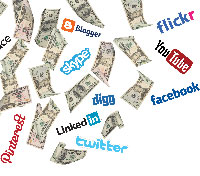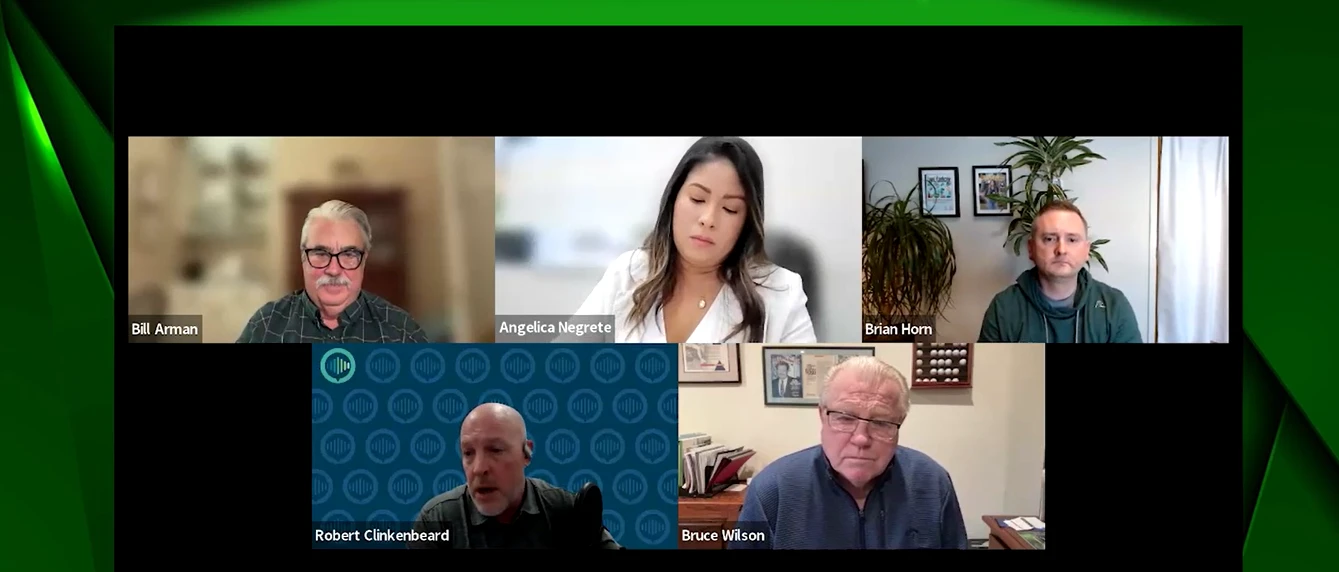
 Social media and the use of social media websites is probably the most important business breakthrough since the industrial revolution. It can improve many areas of your business and is not just limited to marketing.
Social media and the use of social media websites is probably the most important business breakthrough since the industrial revolution. It can improve many areas of your business and is not just limited to marketing.
But how do you determine the real monetary return on implementing a social media campaign?
One of the most common performance measurements on any investment is called “return on investment” (ROI). ROI is used to evaluate one investment over alternative investments.
To calculate ROI, the benefit (return) of an investment is divided by the cost of the investment; the result is expressed as a percentage or a ratio. The return on investment formula:

The easiest way to visualize this formula is assume we purchase a stock for $10. Two years later we sell it for $14. The two-year ROI is 40 percent.
While a direct response marketing campaign is easier to identify ROI than social media, that doesn’t mean it’s impossible, and that you should ignore monitoring the effects it has on your brand.
It’s marketing, too. Because social media has many qualitative benefits for a firm and everyone in your company is touched by this type of networking several times per day, many of us forget that assembling a social media strategy is still an investment and needs to be evaluated as such.
In doing some research for this article, I came across several metrics that are used to measure value. While many in the advertising community and the world of academia believe the social media discipline is early in its development and therefore we should not apply traditional financial measurement tools to it. I disagree.
Unless you can monetize the number of Facebook friends you have, or how large your LinkedIn group is, or what your Klout score is, we find ourselves ignoring the fact that there is a cost-benefit relationship to implementing the program.
Many believe that return can be expressed as the number of participants who have “friended” us or the size of our group. I would caution against this type of thinking as this is precisely what drove the internet bubble of the 1990s. Remember when money didn’t matter and it was the number of eyeballs that visited a website?
Well, many of those companies that relied on eyeballs are gone and those who understood that it was about positive ROI have remained and continue to thrive.
The numbers game. So how do we assign value to this intangible called social media? The ROI formula can be used to calculate your return, but the inputs into the formula become much more complex.
From a marketing prospective, the return is incremental sales dollars.
However, social media provides many more benefits to a business than incremental sales dollars.
While it’s clear that everything we do in business (e.g. hiring competent staff, using safe treatment techniques, providing customers with accurate information) is done in an effort to increase revenue and profits, many times it’s difficult to quantify how each of these activities add to the top and bottom lines – but we do know they can be drivers of growth.
So in evaluating our social media strategy, at a minimum, we need to know the expected benefits from implementing such a program. The following is a list of benefits (and by no means is exhaustive) that can be provided by a successful social media strategy:
- Customer acquisition
- New sales to existing customers
- Referrals
- Decrease in customer complaints
- Website traffic
- Keyword rankings
- Employee involvement
- Reputational issues avoided
Quantifying the above benefits can be somewhat illusive as many on the list are qualitative. But this doesn’t mean you shouldn’t try, as it is your money at risk. In fact, one of most easily quantifiable ROIs that financial professionals are able to calculate is in real estate. Here we can draw a parallel as residential real estate, for example, has many qualities that can be measured both qualitatively and quantitatively.
I am not giving an opinion here as to whether I think real estate is a good investment, just that ROI is easily measured.
The return on residential real estate can be measured by the return you would receive if you rented the home minus expenses and applying a capitalization rate. Depending on various qualitative factors including neighborhood, condition, size etc. many times you can add to the value of a home and the value may be assigned at a much higher rate. In this case, the minimum value is the one derived by the math. It’s the qualitative factors that can potentially add additional value.
Similarly with a social media program you should be able to monetize a potential revenue stream such as for every 1,000 Facebook friends, you can sell three new accounts that are worth $600 per year.
In this manner, we have a measurable return. If the average life of a quarterly customer is five years, these three customers will be worth $9,000, ignoring the time value of money. The question becomes how much was the cost to secure these 1,000 friends. The difference is your return and can be plugged into the ROI calculation above ignoring all other costs.
In addition to the return you get from Facebook friends, you may decrease customer issues, your employees may be more engaged in your business and your web traffic may increase.
These qualitative items may not be able to be measured easily but are intangibles such as the quality of the neighborhood in the real estate example.
The above discussion provides a framework that can be used in evaluating an investment in social media. Above all, a prudent business person should at a minimum look for the monetary return that can be measured and make a decision based on that.
Traditional financial analysis cautions us against making an investment in any endeavor to reap intangible rewards. Using the ROI model should always give us an acceptable measurable monetary reward for an investment made.
Daniel S. Gordon is a New Jersey-based CPA. He runs Turfbooks, an accounting firm that serves landscapers. Email him at dgordon@giemedia.com.
Blog This
Social media consultant Chris Heiler share some blogs you should visit if you are interested in starting one.
Susan Cohan Gardens
www.susancohangardens.com/blog/
I point to Susan Cohan as someone who has used blogging to build a strong personal brand on a local level as well as industry-wide. Susan is a fabulous landscape designer in New Jersey and has been blogging since 2007.
Susan has been a model of consistency through the years. From 2008 through 2012, Susan averaged 104 blog posts per year. That’s one blog post every three to four days for four years. That’s truly outstanding. What I’ve always appreciated about Susan is that she does not shy away from sharing her candid opinions on a variety of topics. I think this variety and genuineness is what makes her so endearing to her readers.
Key point: Don’t be afraid to share your unique point of view. And do it often!
Weed Pro
www.weed-pro.com/blog/
Weed Pro has been tearing it up since starting their blog in early 2012, averaging about two blog posts per week.
I appreciate the fact that Weed Pro is very pragmatic as it relates to its blogging. They obviously have a well-thought-out plan that revolves around optimizing their website for the search engines. Each blog post is optimized for popular keyword phrases related to lawn care as well as specific to its Cleveland and Columbus markets. Weed Pro’s topics are also very timely. This combination of consistency, timeliness, local relevance and keyword optimization draws in visitors at a steady clip. And their use of highly visual call-to-actions (CTAs) in each blog post ensures a steady stream of leads.
Key point: Be pragmatic.
GoiTalk
goitalk.com/
GoiTalk is the online voice of the property measurement software GoiLawn and GoiPave.
Though they’ve only been blogging since April of 2012, they clearly have a plan in place. Many companies are too self-promotional in their blogging. What I appreciate most about GoiTalk is that they take the opposite approach by being a valuable source of green industry business information for their readers. Their tagline says it all: Profitable ideas, insights and information for contractors. I also appreciate how GoiTalk includes “voices” outside of their company by inviting green industry experts as guest writers. This makes its content more valuable to readers while at the same time earning the blog more exposure.
Key point: Encourage others inside and outside your company to write for your blog.
HighGrove Partners
www.highgrove.net/blog (disclaimer: HighGrove is a client of my company, Landscape Leadership)
HighGrove Partners, led by CEO Jim McCutcheon, is a very successful landscape management company in Atlanta and a Lawn & Landscape magazine Leadership Award winner.
Many successful CEOs and business owners hide behind a curtain of secrecy, unwilling to share candid insights and experiences with their green industry peers.
McCutcheon takes the opposite approach, regularly sharing his insight and showcasing the unique HighGrove culture via their company blog.
This fresh take on company transparency and sharing is what we appreciate most.
Key point: Give your leaders the opportunity and platform to share their unique and candid views.

Explore the April 2013 Issue
Check out more from this issue and find your next story to read.
Latest from Lawn & Landscape
- OTR Engineered Solutions names Oscar Torres president, CEO
- The rules of M&A are changing
- Our top stories of 2025
- Exscape Group adds 3
- Alpine Gardens earns NALP, ALCC awards for Estes Park project
- Takeuchi, United Rentals partner on machine donation to WyoTech
- Spark Dealer Group acquires LSM Outdoor Power
- LandCare promotes 2 in Southwest region





